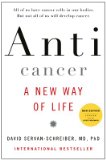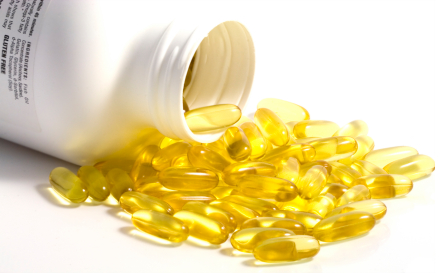Irritable Bow el Syndrome (IBS) is one of the most frequent diagnoses in any primary care practice in our country and probably around the world. Irritable Bowel Syndrome is a name that has been put on the condition in which the patient has intestinal gas, bloating, burping, diarrhea and/or alternating constipation, with a general unpleasant feeling in the gastrointestinal tract.
el Syndrome (IBS) is one of the most frequent diagnoses in any primary care practice in our country and probably around the world. Irritable Bowel Syndrome is a name that has been put on the condition in which the patient has intestinal gas, bloating, burping, diarrhea and/or alternating constipation, with a general unpleasant feeling in the gastrointestinal tract.
In conventional medicine when a patient has these symptoms they may get a stool test, colonoscopy and an upper G.I. endoscopy. If all these tests are normal the patient is then told that he or she has "Irritable Bowel Syndrome", and "nothing to worry about". However the symptoms can be quite bothersome and will often lead the patient to seek out the care of an integrative physician.
Integrative doctors in general and my practice in particular know that this diagnosis is a kind of "wastebasket" diagnosis that people are lumped into. With thorough investigation from an integrative medicine point of view many underlying causes can be found that are completely treatable and symptoms disappear.
One of the most common causes of these symptoms is food allergies. Conventional doctors only will call a food an allergen if when the patient eats that food, they break out in hives and a rash all over their body and require emergency care. Integrative doctors know that more subtle allergic reactions can cause the symptoms of IBS.
An article by PJ Whorwell and colleagues, several years ago looked at an additional way to find food allergies. Specifically this blood test looks for "IgG: antibodies in the blood. I've been doing blood tests for this type of food allergy for several years and have found it to be extremely valuable in helping people with the symptoms of IBS.
This study took a group of patients with Irritable Bowel Syndrome and did the IgG antibody blood tests on them. They followed the patients over 12 weeks. For those patients who were fully compliant with the diet recommended by the blood tests, there was a 26% reduction in symptoms. In addition other nonspecific symptoms including quality of life and anxiety/depression also improved in these patients.
I was delighted to recently find this study which confirms what integrative doctors have been doing for some time. In my practice, this is just one of several tests that I do to help patients resolve their IBS. And I have seen remarkable results with this.
If you have symptoms of IBS, please ask your doctor to do the IgG antibody blood test to see if you have food allergies. Then follow the diet prescribed by the blood tests and see if your symptoms go away.
Let me know if you have found food allergies to be relative to your symptoms and whether a specific diet has been helpful to you in minimizing intestinal symptoms? Questions? Let me know here
I look forward to hearing from you.
Dr. Soram




 The more flexible your body, the more flexible your arteries will be. This is the conclusion of several very interesting studies that were recently published in the medical literature.
The more flexible your body, the more flexible your arteries will be. This is the conclusion of several very interesting studies that were recently published in the medical literature. A new study in Environmental Health Perspectives written by KS Betts and colleagues looks at the effect of a flame retardant that is used commonly in home and office furnishings as well as electronics and airplanes. The product is called polybrominated diphenyl ether and in this article I will call it PBDE.
A new study in Environmental Health Perspectives written by KS Betts and colleagues looks at the effect of a flame retardant that is used commonly in home and office furnishings as well as electronics and airplanes. The product is called polybrominated diphenyl ether and in this article I will call it PBDE. I am delighted to share with my readers a new book I am reading called
I am delighted to share with my readers a new book I am reading called  On each of our genes there is a "protective cap" at the ends of each chromosome. These caps are comprised of a certain sequence of DNA. The scientific name for these caps is "Telomeres."
On each of our genes there is a "protective cap" at the ends of each chromosome. These caps are comprised of a certain sequence of DNA. The scientific name for these caps is "Telomeres." In a new study just published in the American Journal of Clinical Nutrition, Jackson, Leboff and other authors went back and looked at the data from the Women's health Initiative Calcium plus Vitamin D Clinical Trial. This trial looked at over 3000 postmenopausal women age 50-70.
In a new study just published in the American Journal of Clinical Nutrition, Jackson, Leboff and other authors went back and looked at the data from the Women's health Initiative Calcium plus Vitamin D Clinical Trial. This trial looked at over 3000 postmenopausal women age 50-70..jpg) As most of my patients, friends, and readers know I have a special interest in the role that the environment plays in human health. That is why I am a professor at the
As most of my patients, friends, and readers know I have a special interest in the role that the environment plays in human health. That is why I am a professor at the .jpg) For many years now, observational studies as well as experimental studies have noted the biological consequences of phthalate exposure on neurological development in children.
For many years now, observational studies as well as experimental studies have noted the biological consequences of phthalate exposure on neurological development in children.


